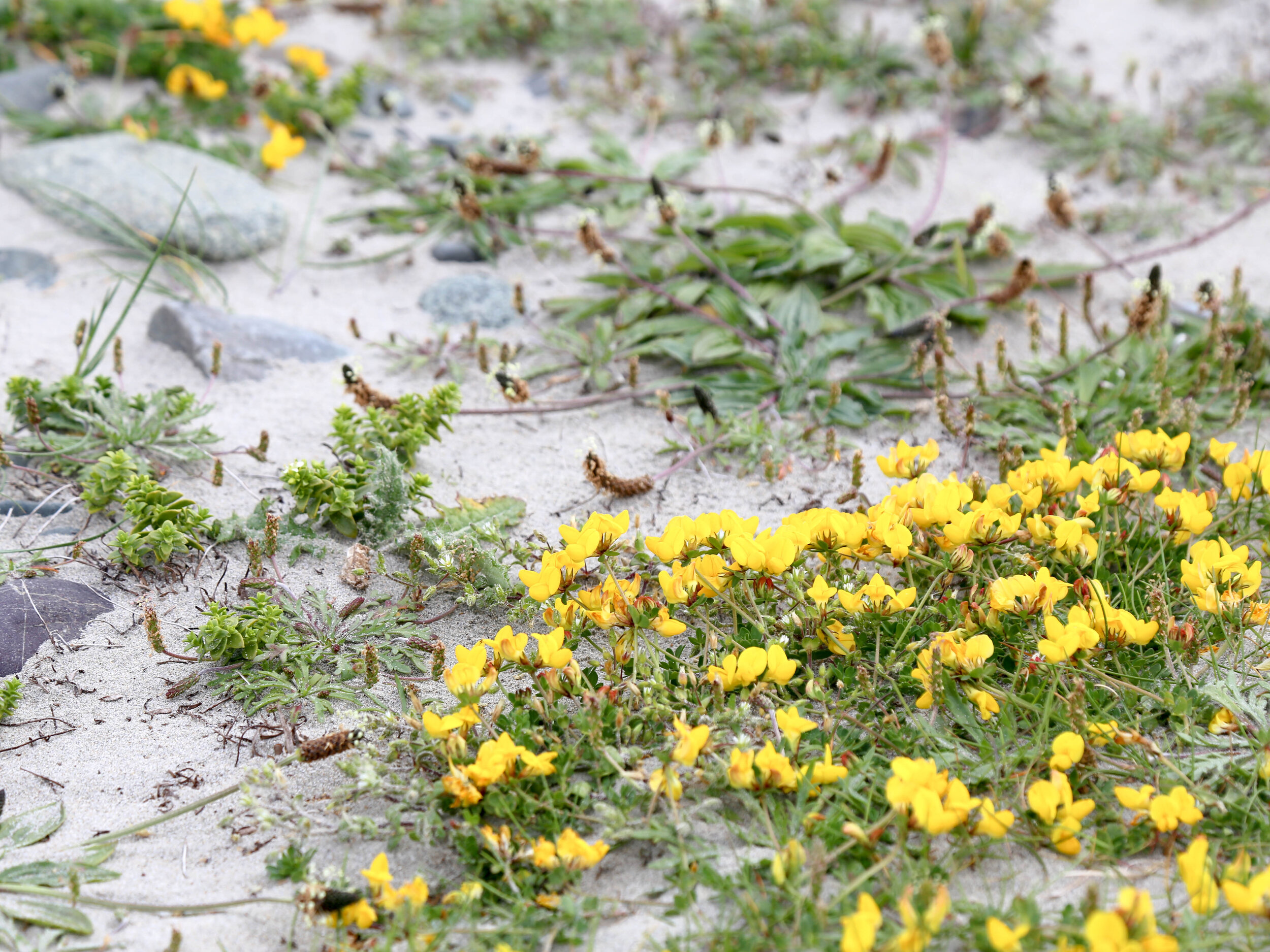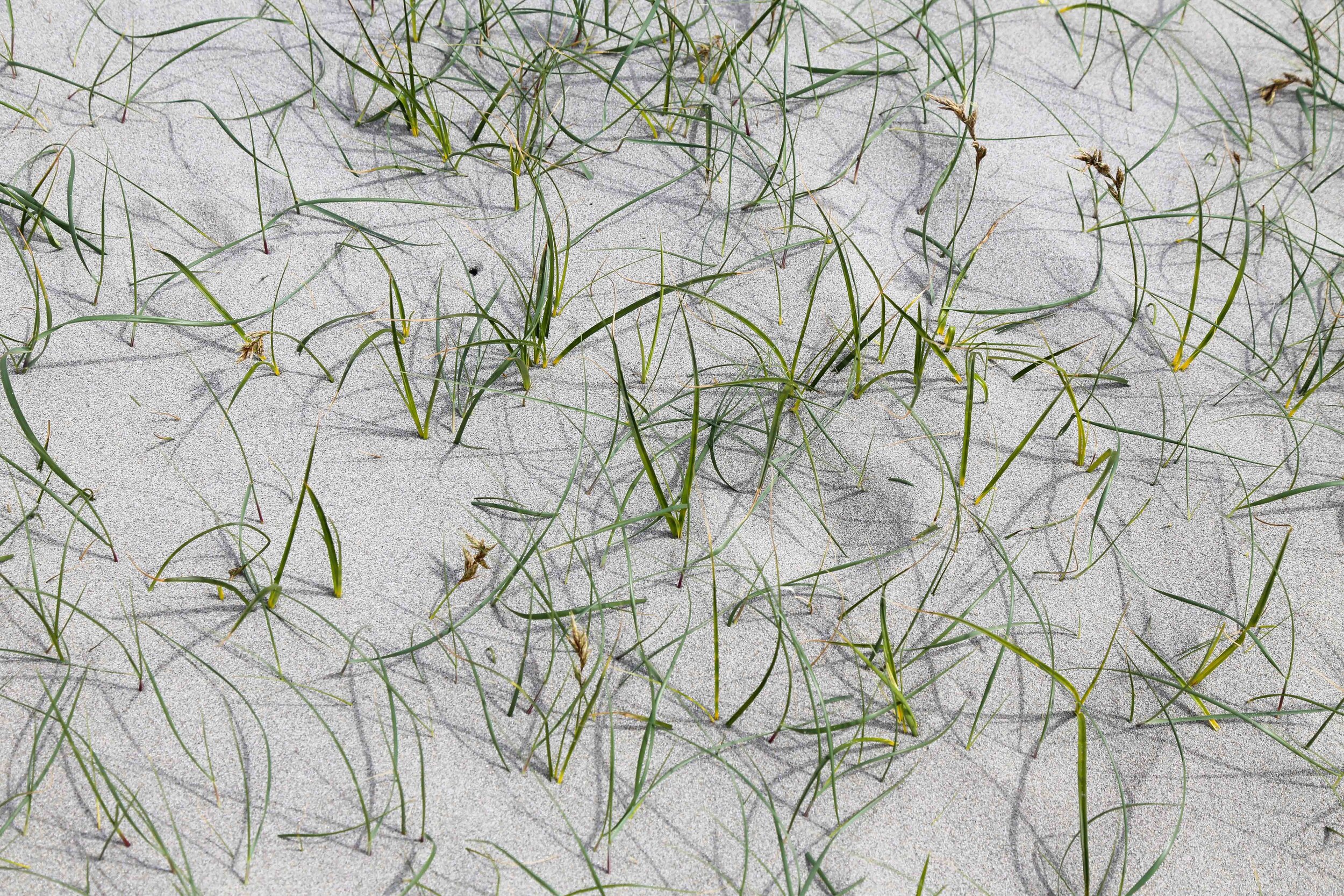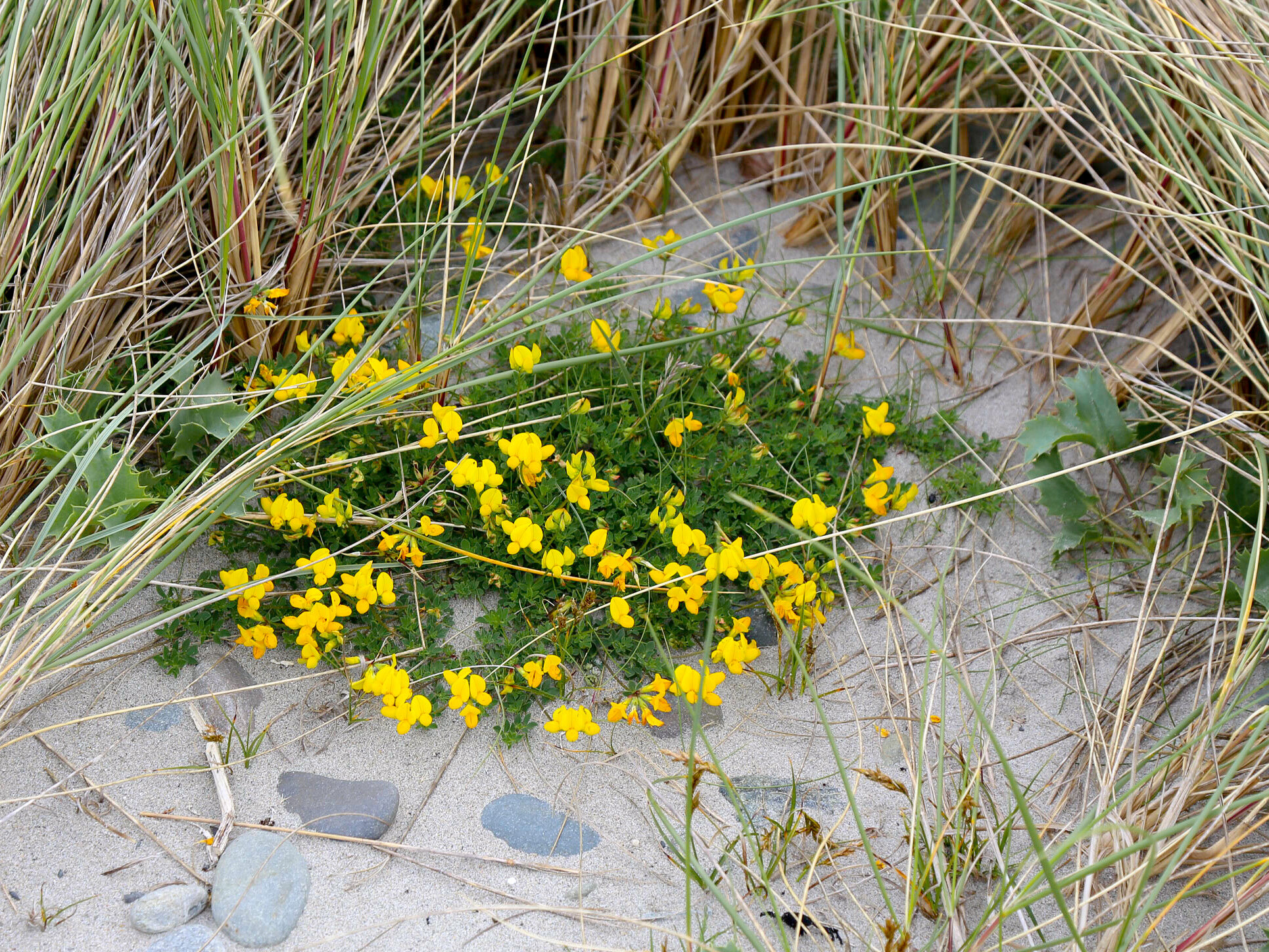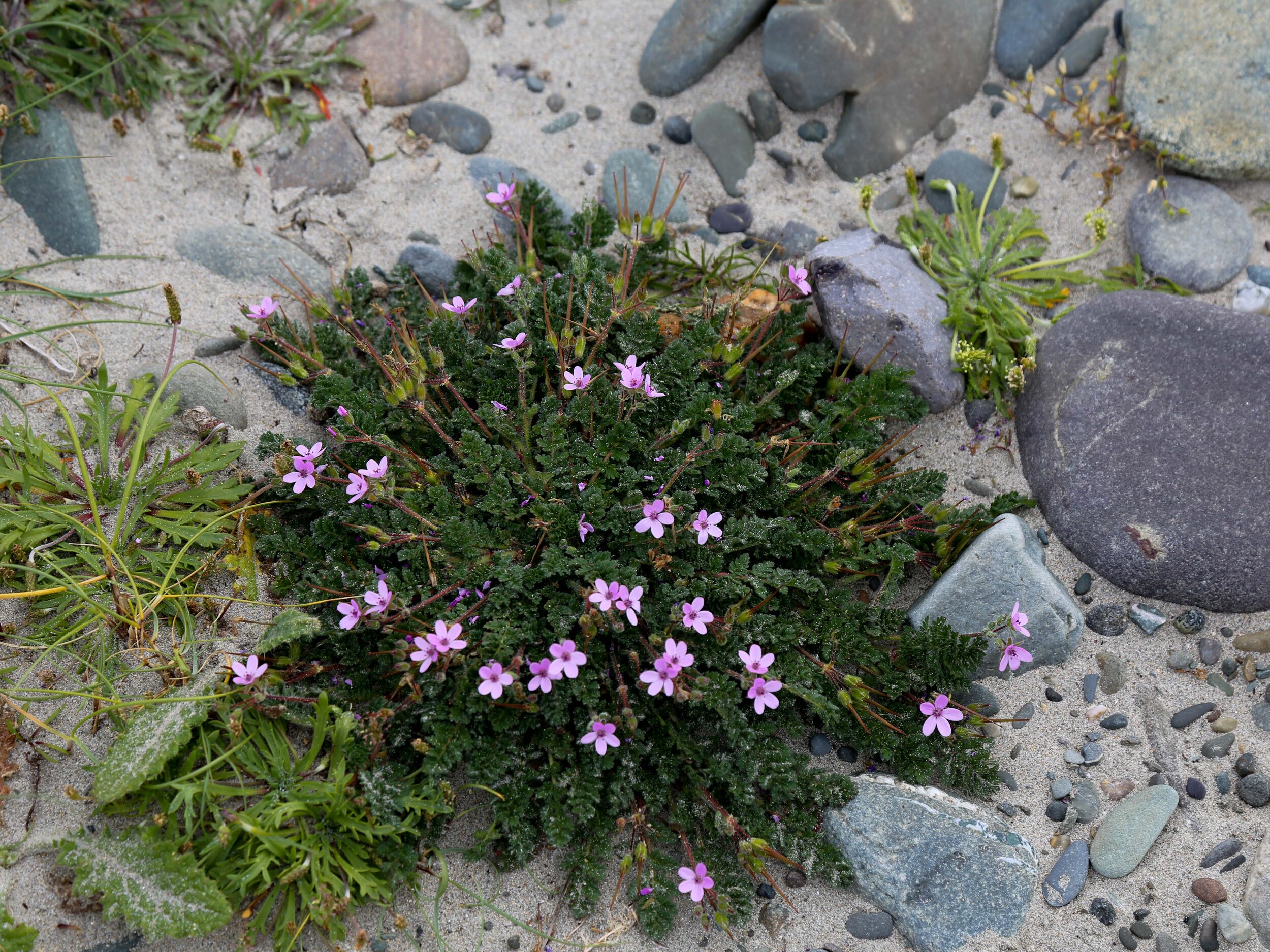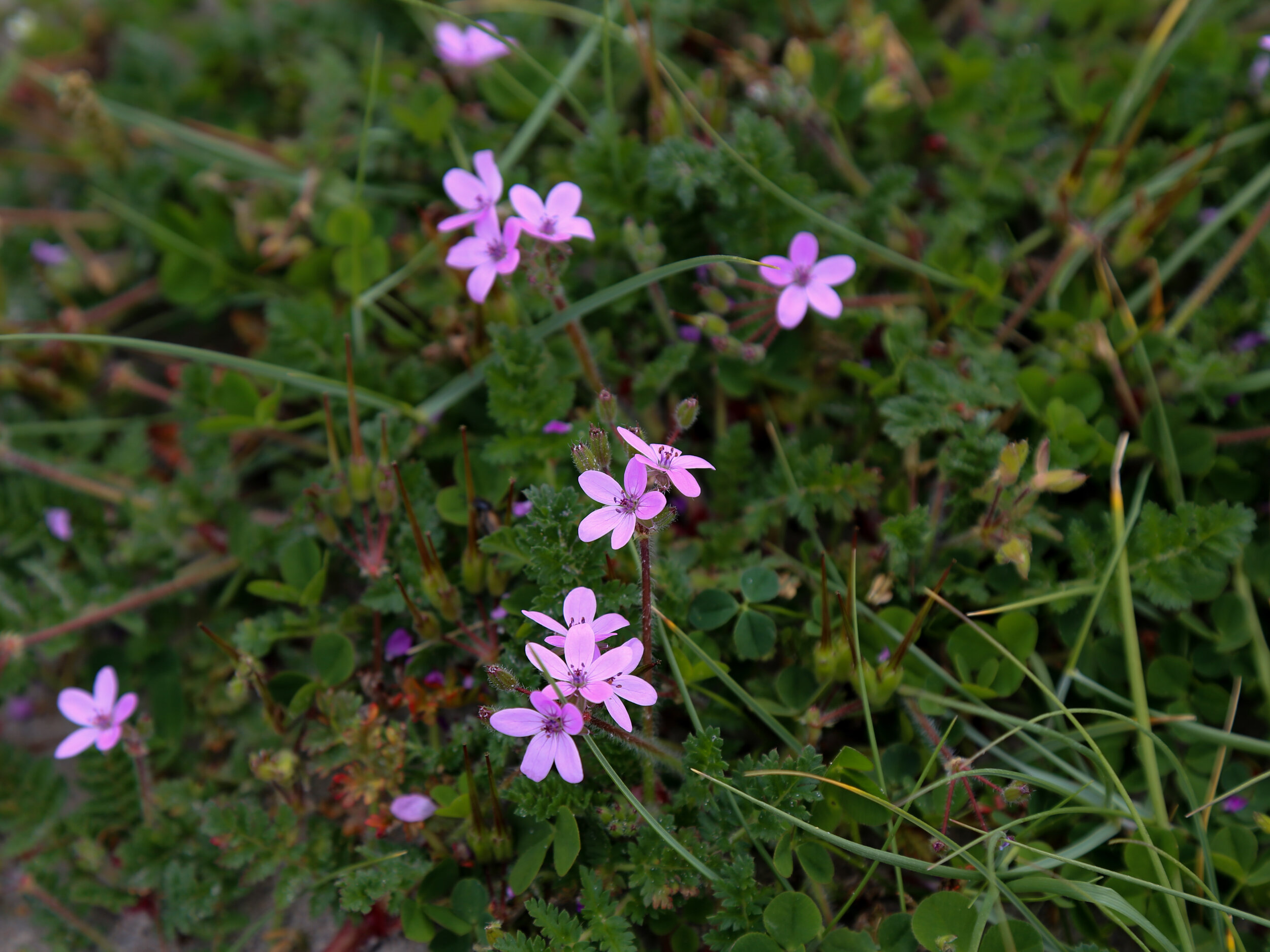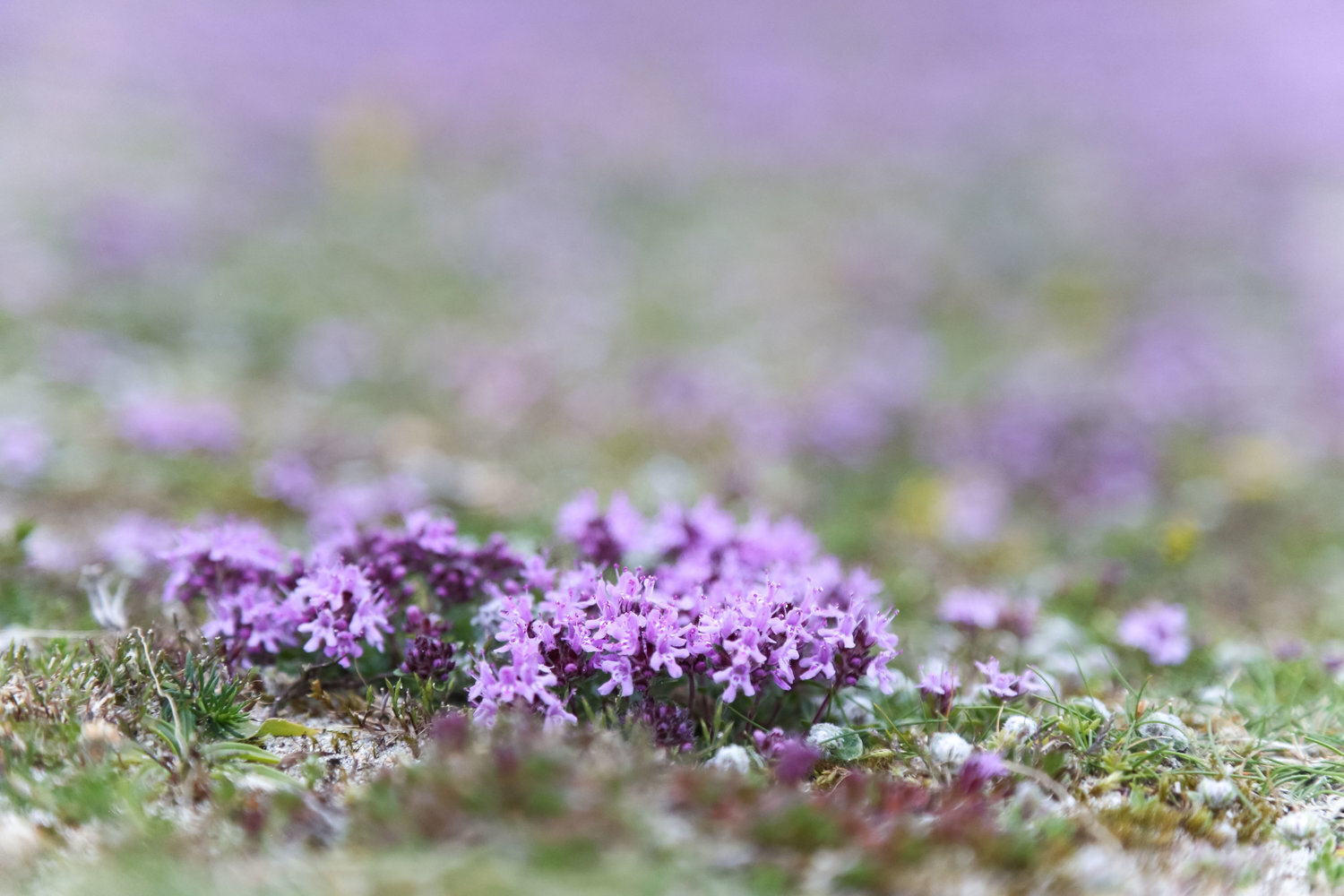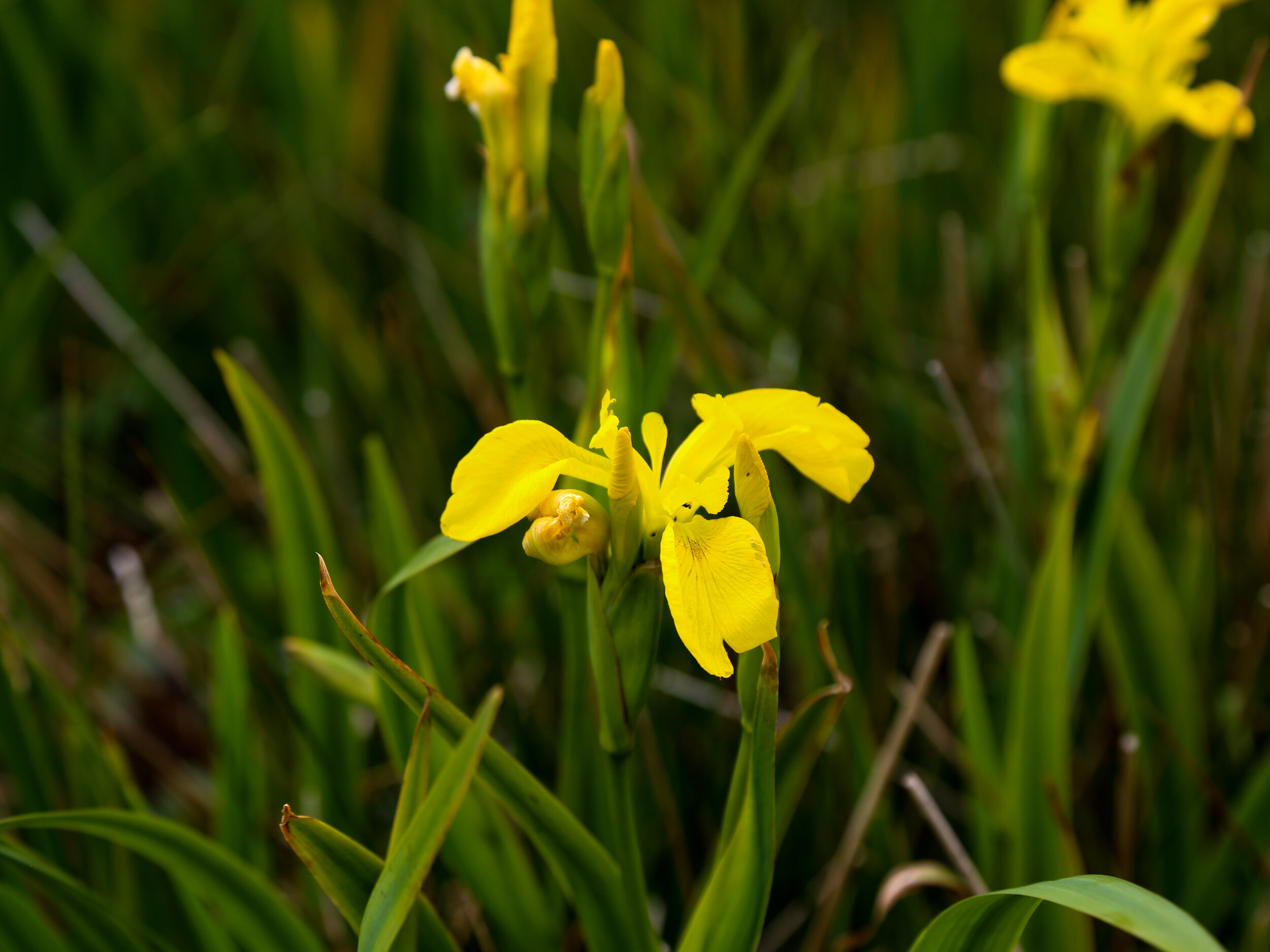HABITATS: Wildflower Hunting in the Sand Dunes
Often overlooked, our sand dune systems are an ideal place to hunt for wildflowers. In early June we spent a sunny morning rummaging about in the dunes. There we found an incredible diversity of wild plants and flowers, all growing side by side.
At the beach crashing waves grab our attention. But as we look out across the vast blue sea we are missing out on a whole world of unique, hardy and clever wildflowers growing just over our shoulder.
Wildflowers at the beach you say …really?
Yes. Though we might not really think of it - sand dune systems are a really great place to go wildflower hunting. The dunes system contains many “micro-habitats”. This makes the dunes a great place for ‘field botany’.
What is field botany?
Field botany is the study of ‘plants in their place’. Many books take an academic taxonomy-based approach to botany. This means they focus mainly on individual plant species and families. The problem with this is that the plants are then divorced from the study of their habitat and context. Field botany, on the other hand, is the study of plant species in the field, looking at where a plant is found.
“Field botany is the study of ‘plants in their place’. ”
What can we learn from field botany and exploring habitats?
In field botany we are asking question of plants when we find them. This means we are asking why a plant is growing in a location. We look at what plants are found growing together in a habitat. When we learn to look at plants ‘in the field’ we can learn what environmental habitats and conditions a plant requires as well as spotting activity that may be taking place in a location. For example a dense stand of bog cotton is a good indication that this section of bog has been cut in the past. Nettles are also usually an indicator of recent of historic human activity.
Field botany is particularly important right now as we need to track the wild plants we have and understand the factors that are contributing to biodiversity loss.
Why are sand dunes, slacks and meadows a great place to learn about habitats and ‘plants in their place’.
Where the sea shelves gently (a beach with no rocky sea cliffs), you will find within a few square metres, dramatically different microhabitats. And as the ground is relatively flat all of this is easily accessible - even with young children in tow. The varying interplay of environmental factors including wind, shelter, salt water, fresh water, sand and peat creates a diverse range of habitats and so a wide range of wild plants. Almost side by side we found pyramidal orchids, flag irises, sea holly, and sandwort.
Also, as more and more of our landscape is fenced in - this is accessible wild nature. Here you can freely roam, hopefully without needing to worry about cars and access rights.
“Wind, shelter, salt water, fresh water, sand and peat creates a diverse range of habitats and with this a wide range of wild plants. Side by side we found pyramidal orchids, flag irises, sea holly, and sandwort.”
So is it possible to clearly and easily identify distinct microhabitats?
No, not really. Nature is never clean cut and easily categorised. In reality one habitat merges into the next without a simple handy clear dividing line. Many of the species below such as Birdsfoot Trefoil can be found across the categories. But remember field botany is the study of plants in their place - we are looking at the relationships between the plants and their environment and not so much at the idea of categorising plants. Try to keep this mindset each time your mind naturally jumps to file and categorise.
That said, for the purposes of this post we are going to define four (overlapping) habitat types that we encountered this week, in early June, at a beach close to us in County Mayo, in the west of Ireland.
Exposed Outermost Sand Dunes (these are the driest most exposed area)
Sheltered Shingle and Dune Slacks (these areas are also dry but more sheltered)
Grazed Dry Grasslands and the “Machair” (these are free draining grazed inland grasslands)
Waterlogged Grasslands and Water Edges (waterlogged, soggy, next to freshwater courses and furthest inland)
Behind you as you look out to sea lie the sand dunes. And in amongst and behind the dunes lies a vast array of wild plant life that grows just above the high tide mark. As you face the sand dunes it is often possible to detect a line of the dried twigs, leaves, and seaweeds (see dried seaweeds in the foreground here). This line is usually a good indication of the high tide mark. Behind this line is where you can start your hunt for wildflowers at the beach.
“Nature is never clean cut and easily categorised. In reality one habitat merges into the next without a simple handy clear dividing line. ”
In July and August (above) the flowers of marram grass appear. Like all grasses the marram flowers are not showy or colourful but thick, spikey straw-coloured flowerheads.
EXPOSED OUTERmost SAND DUNES
This is the driest and most exposed area of the sand dunes just above the high tide line. The fore dunes are one of the harshest environments in which a plant might grow. As you explore this area look to see what hardy plants manage to grow here.
Ask yourself how can these plants possibly survive in these conditions? How can they gain a foothold to establish themselves amongst the shifting nutrient-poor sand? How can they survive high abrasive sand-filled winds? How do they adapt to the dryness of sand and the frequent spray of saltwater?
Plants that can grow in the outermost exposed section of the sand dunes often have distinctive features that allow them to grow in this harsh environment. These include rhizomatic roots that can establish in very loose ground and thick or fleshy leaves that can withstand long droughts and abrasive sand-filled winds.
Things to look for here include Sea Holly, Sea Rocket, Grasses, Sand Couch, and Sea Sandwort
Did you know that marram grasses don’t just happen to grow on sand dunes - But rather they actually create the sand dunes? Bent grasses or marram grasses are so common it can be easy to overlook how clever and hard-working these grasses really are. Marram grasses work by trapping the sand in the wind blowing inland from the seashore. Over time, as more and more sand is dropped into the grasses, the sand dunes begin to grow. What’s more ... marram grasses have deep networks of roots (rhizomes). These root networks stretch out like a mat below the surface and send up dozens of new shoots. This network of long underground roots can be many meters long and so helps to stabilize the sand dunes as they grow. All very clever.
Sea Sandwort has thick fleshy leaves and a deep root system allowing it to thrive in the harsh dry, windswept environment of the outermost shifting sand in dunes.
“The fore dunes are one of the harshest environments in which a plant might grow. Ask yourself how can these plants possibly survive in these conditions? How have they adapted?”
Sea Holly grows in shingle and sandy soil of sand dunes. From July to September look out for their distinctive pale round blue flowers.
“Plants that can grow in the outermost exposed section of the sand dunes often have distinctive features that allow them to grow in this harsh environment. ”
Note the bright yellow at the base of these grasses. These are areas of the blade that have only recently been exposed to the sun. These areas are newly exposed as the grasses grow and push up through the sand and also as loose sand is blown and moves about.
2. SHELTERED SHINGLE AND DUNE SLACKS
Behind the outermost fore dunes you will find more sheltered sections of the dunes.
Though relatively more sheltered this is still a harsh environment. Plants must be able to tolerate wind exposure, high salt levels, and long droughts, and occasional winter flooding. They must also have clever rooting strategies that allow them to grow in clumps or mats as they establish themselves.
Plants of the outermost dunes such as Sea Holly and Sea Sandwort (seen above) also grow here, in this slightly more sheltered environment. But you will also notice other plants that will establish themselves in the shelter provided by the stronger grasses. In the summer months, you will also start to notice plants with delicate carpeting flowers that would never survive on the outermost edges of the dunes.
Birdsfoot Trefoil grows in the shelter of Sea Holly and Marram Grasses.
“Plants must be able to tolerate wind exposure, high salt levels, long droughts, and occasional winter flooding. They must also have clever rooting strategies that allow them to grow in the shifting sand. ”
In the more sheltered areas of the dunes Sea Holly and Sea Sandwort, both seen in the outer more exposed dunes, now compete with Birds-foot Trefoil and White Clover. Greater shelter from the wind and less frequent saltwater exposure allows these low growing wildflowers to establish themselves.
Stork’s-bill flowers from May to August and favours dry sandy and bare grassy coastal places. Storks-bill grows in dense matted clumps allowing it to establish itself and gain a foothold nestled amongst the shingle here.
Stork’s-bill, a closer look.
Notice that the Sea Sandwort growing here in a more forgiving, sheltered part of the dune system is in bloom. In contrast, the Sea Sandwort photographed earlier, on the same day in the outer more exposed section of the dunes (earlier photograph), was yet to come into bloom. Though these plants are only metres apart, the plant in the more sheltered area has bloomed earlier in the season. This is because sand dunes systems contain many microhabitats. Wind exposure, water table level, and soil stability create very different conditions in very close proximity.
“Sand dune systems contain many microhabitats. Wind exposure, water table level, and soil stability create very different conditions in very close proximity. ”
Silverweed is a widespread and common plant. However It has a distinctive rooting system that allows it to spread and gain a foothold in the loose sand between shingle and stones in the dunes.
Common Mouse Ear like Silverweed has an ability to self root and gain purchase among loose sandy soils.
Sea Milkwort grows in salt marshes as well as on damp shingle and sandy areas occasionally inundated by the sea. Sea-milkwort stores fresh water in its fleshy leaves and this helps to counteract the salt-water in the environment it inhabits.
3. GRAZED DRY GRASSLANDS and the machair
Just inland of the sheltered section of the dunes often you might find dry grasslands. In parts of the west of Ireland, in areas where they sea shelves gently and there is no steep cliff face or rocks, you may come upon the “machair’ grasses. Machair grasslands are flat sandy plains that form between sand dunes and (often) an inland lake or rivers. Along with its rarity, the machair is also very beautiful. In the summer months, the flat plains of sandy machair are ablaze with the most beautiful tiny wildflowers. The grass is kept short by intermittent animal grazing and the soil is dry and well-drained with high sand content. Here the sandy ground has been stabilised over time by grasses and mats of flowers such as Birdsfoot Trefoil.
Shingle gives way to areas of “commonage” where sheep and cows wander and graze. “Commonage” refers to a form of ownership of land, where a group of people, belonging to the same community or local area, own a large parcel of land that is used for grazing of cows and sheep. Each person owns a fraction of the entire tract of land in common with all others, but the fraction does not entitle the owner to exclusive use of any part of the commonage. Anyone’s sheep and cows can graze anywhere in the commonage. In Ireland there are 426,000 hectares (1,052,668 acres) of commonage.
Wild Thyme and Sea Milkwort can at first glance be confused and may both grow in sheltered sandy areas behind sand dunes. However, Wild Thyme can be distinguished by its leaves which are finer and less fleshy than that of Milkwort. Also try to squash the leaves between your fingers to release the thyme smell.
“Field botany is important as we need to understand the factors contributing to biodiversity loss. Our biodiversity is under threat on three fronts … climate change, invasive species, and intensive agriculture and land management practices.”
Sheep roaming and grazing across this area of ‘commonage’ land .
Birds-foot trefoil (yellow) - indicates lime rich dry grassland it is common in dune grassland though found elsewhere like along road verges. Here it is growing intermingled with white clover.
Daisies and buttercups with evidence of cars and tractors using this area as a roadway to cross the machair area.
“ Machair grasslands are flat sandy plains that form between sand dunes and (often) an inland lake or rivers.”
Cranes-bill
Pyramidal orchids can be found growing in lime rich stabilised dunes and grasslands near the sea.
4. WATERLOGGED GRASSLANDS AND WATER EDGES
So far we have been looking at habitats characterised by dry, sandy free-draining soils. Soils that are mostly sand are rarely waterlogged as rainwater and flash floods drain quickly through the structure of this soil.
However, side by side with dry flat grasslands, you will often also find patches and areas of soggy and waterlogged grasses. If you find yourself wandering along the edge of a winter stream, a small watercourse, or a lake you will notice a sudden change in plant life. Here, slow-moving water on its path to the sea has deposited silt and peat. You may also encounter human-made ditches and drains filled with flowers. When the water table is close to the surface, drains and ditches have been built to relieve winter flooding and maintain access to areas of commonage and seashore in the wetter months of the year.
Here in these soggier areas, you will find our fourth microhabitat - the microhabitat of waterlogged grasslands and water edges.
Wild plants tell us a lot about the environment in which they grow. Over time you will come to know, that water mint is an indication of an area of ground which is frequently waterlogged. Water mint, as its name suggests, likes to keep its feet wet and grows in soggy places - eg along the path of a winter stream that partly dries up in the summer. Water mint is common in marshy grounds in the slack area behind sand dunes and is sometimes flushed with purple as seen above. As you squash the leaves between your fingers to release a minty smell you may notice the water from the soft ground slowly, but surely, seeping into your shoes. Soon, just like the water mint, you too will have wet feet.
“Wild plants tell us a lot about the environment in which they grow. ”
Wild plants can also tell us about activities that have previously taken place in an area. Bog Cotton or Cotton Grass often forms in dense patches. A dense stand of bog cotton is often an indication of an area where the bog has been cut away.
Knapweed is a widespread plant not at all limited to coastal areas and is common in grasslands, waste ground and arable land. The knapweed photographed here is growing in a section of sheltered boggy grassland about 20 meters inland from the high tide mark where the sea holly was photographed about 15 minutes previously. This diverse range of microhabitats, occuring side by side, is one of the reasons why our coast is a wonderful place for wildflower hunting.
Yellow Flag Irises commonly grow in damp wet fields and along canals, in drains and ditches. Here at the coast we found the Flag Iris growing in a man-made ditch built along the edge of a tar road built to access the beach car-park.
Notes:
Field botany is particularly important right now as we need to understand the factors contributing to biodiversity loss. Ireland’s biodiversity is under threat on three fronts … from climate change, invasive species and intensive agriculture and land management practices.
If you are exploring wildflowers in Ireland and are interested in contributing to the mapping of Ireland’s wild plants consider uploading and logging your finds with Ireland’s National Biodiversity Database Centre - this is Ireland’s citizen science portal and they would love for you to get involved.
If you want to know more about why mapping and tracking biodiversity matters and how all of this information is collated - watch this video
If you are looking for the best online resource to help you with wildflower identification - we recommend Zoe Devlin’s reliable, detailed and comprehensive database website - wherever you wander with wildflowers - Zoe has it covered. Wildflowers of Ireland
If you are interested in learning more about the machair grasslands - you will enjoy this.
About our Habitat Series
What makes a great place to live? What are the conditions that support life to thrive and flourish? What is the right balance between shelter and exposure? As architects and designers we ask these questions as we shape the places we live. In this series of posts on ‘Habitats’ we learn about shelter and habitat by turning our eye to the natural world.
Along our coastlines strong winds and waves work together to carve and shape a range of niches, indents, pools and shelters. And it is in these pockets of shelter where wild animals and plants build their homes. From sand dunes, to rocky coastlines filled with seaweeds, sea cliffs and rare machair grasslands, each habitat is the perfect home for someone.

